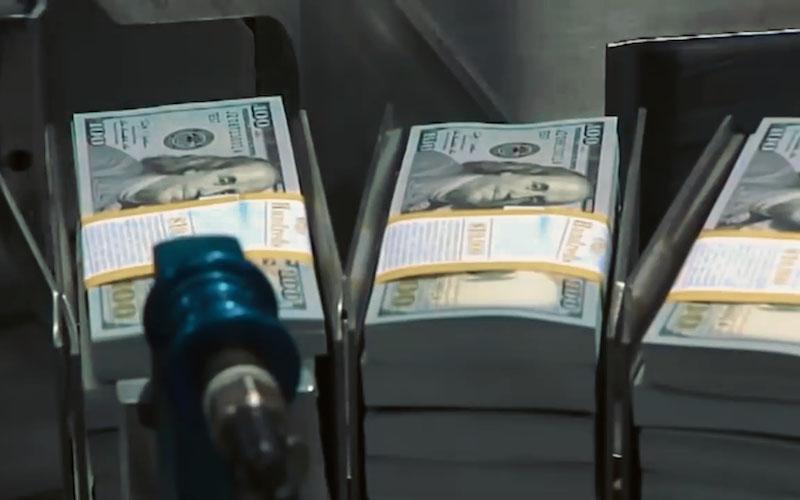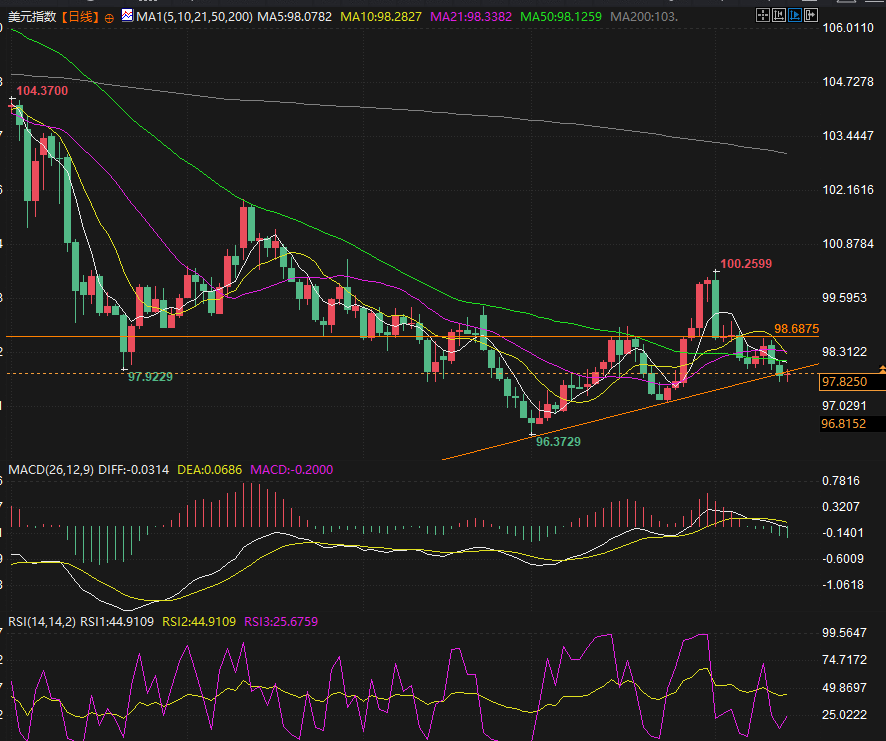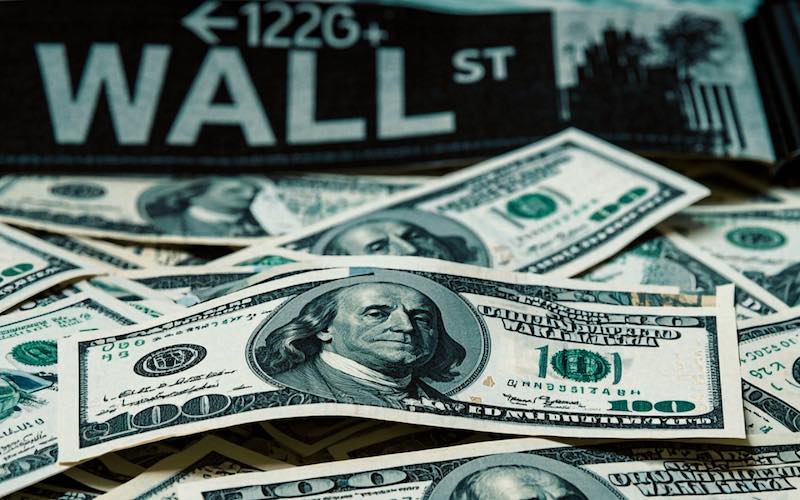Tariffs are a double-edged sword, stinging the US: Steel mill shutdowns and import price increases could hammer the dollar.
2025-08-14 16:50:45

Carol Kong, a foreign exchange strategist at Commonwealth Bank (CBA), stated, "A single month's CPI data is insufficient to confirm an inflationary trend." Considering current market dynamics in sectors like steel and corn, the US economy may face the possibility of "prices falling in some upstream sectors due to insufficient demand, while prices rising in downstream sectors due to rising import costs, leading to overall CPI stability but significant structural inflation." This could adversely impact US fundamentals and, combined with expectations of a US interest rate cut cycle, suppress the US dollar index.
Several market participants told reporters last Friday (August 8) that without the artificially propped-up US steel prices due to trade tariff pressure, steel prices would weaken due to weak underlying demand. US steel demand is struggling as tariffs (25% in March, doubling to 50% in June) have pushed up prices. This weak underlying demand has led to idled plants and reduced imports. Due to weak demand and financial losses, Cleveland-Cliffs closed three facilities. The company reported a $470 million loss in the second quarter of 2025 and is exploring asset sales to improve performance. Similarly, the United States faces a 50 million ton corn supply gap and relies heavily on imports from Brazil. This remains costly due to tariffs, further straining domestic production and supply chains.
Tariffs dampen U.S. steel demand
The tariff changes come at the expense of increased costs borne by steel distributors, processors, original equipment manufacturers (OEMs), and end-users, but market participants say producers are also experiencing a short-term drop in demand. In this environment, less well-equipped steel mills are being idled, which is not surprising to market participants.
Tariff policy makes material suppliers walk on thin ice
U.S. President Donald Trump is trying to reorder the global economy during his second term. But in the process, his administration is "moving too fast and breaking too much," said one steel processor.
Processors had hoped for flexibility in raw material sourcing and supply chain planning to respond to market fluctuations and mitigate risks. However, Trump imposed a 25% tariff on steel in March and doubled it to 50% on June 1st under Section 232. This has led to extreme instability in fundamental conditions such as the market environment and trade rules, like "the ground beneath your feet shifting every day."
President Trump is pushing to rebuild domestic manufacturing and heavy industry. However, the analyst noted that steelmakers are only one part of the supply chain, citing the domestic flat steel industry as an example. This industry relies heavily on imported steel plate substrates, much of which comes from Brazil, to meet its needs.
Structural supply shortages have manufacturers facing surging import costs
“The Trump administration has clear priorities of building up the defense and energy sectors, and shipbuilding is a priority for the administration – but all shipyards need finished steel plate, and the U.S. currently doesn’t have enough finished plate production capacity,” the fabricator said.
The processor highlighted a "structural shortage of sheet metal" in the United States. "The shortage is approximately 5 million tons; the reality is that sheet metal has to be sourced from abroad." Brazil exported 942,793 tons of steel plate in June, of which the United States received 752,503 tons. Despite the recent 50% tariff on steel and aluminum imports, the United States remains a major buyer of Brazilian steel. On August 1, the price of Brazilian exported No. 1 billet was $465-480 per ton, up 0.53% from $465-475 per ton the previous week.
From the Cleveland-Cliffs plant closure to market dynamics
The fabricator said that due to the 50% tariff on steel imports, purchasing raw materials from overseas has become impossible. Furthermore, domestic demand is also experiencing an unusual slowdown. A steel distributor said, "This is a demand story." They emphasized that if it weren't for the tariffs, domestic upstream steel producers would be in a much more difficult situation. While there's also the impact of raw materials, the more fundamental issue is the weakening domestic steel demand caused by tariffs. The distributor said they weren't surprised that Cleveland-Cliffs closed three plants because "this is a sluggish environment."
Cleveland-Cliffs on June 30 indefinitely closed its Steel City and Concohenton plants in Pennsylvania, as well as its plant in Riverdale, Illinois.
The Concoconut Facility and the Challenge of U.S. Steel Demand
The Cleveland-based steelmaker said it could put its blackboard coating facility in Concord up for sale two weeks after reopening, if conditions permit. Cleveland-Cliffs acquired the Conshohocken facility from ArcelorMittal in 2020. The facility processes coiled and discrete sheet, including military and commercial alloys, as well as heat-treated carbon products. As a sheet processor, the Conshohocken closure "does not impact the supply of sheet to the U.S. market; we are simply a manufacturer of the sheet," the processor said.
The processor said that demand for spot panels remains sluggish. Some domestic panel processors are actively negotiating with customers to offer deals at prices lower than the listed quotes.
Falling steel plate prices and weak steel demand
US plate prices fell for the second consecutive week on Tuesday, August 5, with spot trading reportedly slow. They were at $53 per hundred pounds ($1,060 per short ton) on Tuesday, August 5, down 1.85% from $54 per hundred pounds on July 29.
The Steel City plant produces railroad tracks and flat steel. It is one of the three largest steel mills in the United States, along with Evraz in Pueblo, Colorado, and Steel Dynamics in Columbia City, Indiana. The steel processor said the Stelton plant's equipment is old and inefficient. "Steel City only has a few railroads, and the equipment there is really old and inefficient; I'm not surprised it's also been idled," he said.
Hedai's facility closure halts steel supply
On the other hand, there is a compact strip mill that produces hot-rolled sheet, including high-carbon and alloy black strip. Steel distributors say the steel produced at the Riverdale plant is "a specialized, high-carbon product that other mills are reluctant to produce."
“In a down economy, with low-volume, hard-to-make, high-cost products, I understand why they closed the Riverdale plant,” the distributor said, adding, “Despite the tariffs, Riverdale’s customers have had to source this steel overseas.” Another steel distributor told reporters, “From Cleveland-Cliffs’ last earnings call, it was clear they needed capital, so they are looking to divest these assets.”
Cleveland-Cliffs CEO Lorenzo Goncalves said some idle assets may be sold during the company's second-quarter earnings call on July 21.
Cleveland-Cliffs lost $470 million in the second quarter of 2025. During the earnings call, Gonsalves hinted that the conglomerate itself is a valuable and marketable asset.
The current US tariff policy and market supply and demand dynamics may be laying the groundwork for a phenomenon where upstream prices fall, downstream prices rise, and overall CPI remains stable, but structural inflation remains severe. This trend has already been demonstrated in the steel and corn industries. If tariffs persist and supply-demand imbalances remain unresolved, this structural inflation could spread further, becoming a prominent problem for the US economy. This, combined with declining interest rates, could weigh on the US dollar index.

(Daily chart of the US dollar index, source: Yihuitong)
- Risk Warning and Disclaimer
- The market involves risk, and trading may not be suitable for all investors. This article is for reference only and does not constitute personal investment advice, nor does it take into account certain users’ specific investment objectives, financial situation, or other needs. Any investment decisions made based on this information are at your own risk.





















